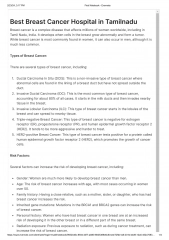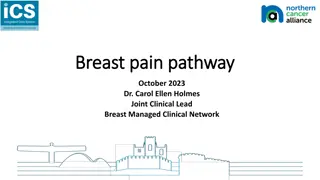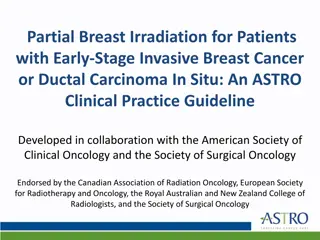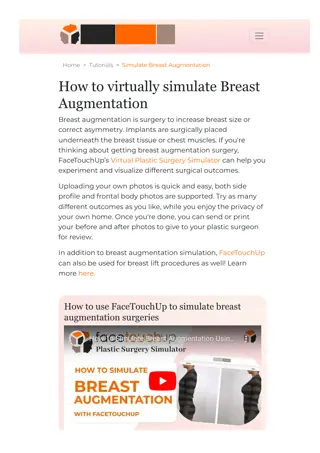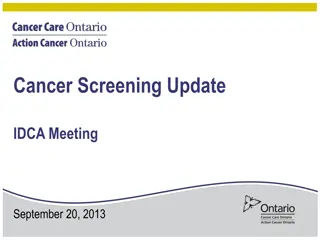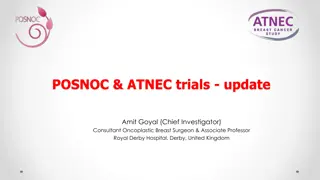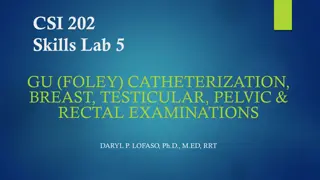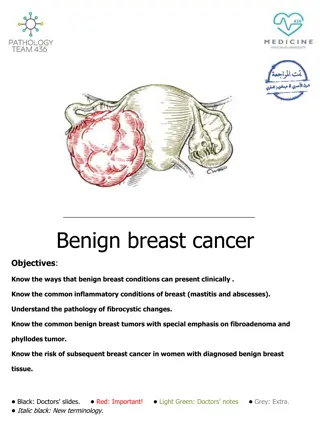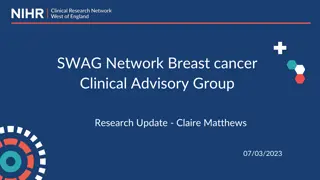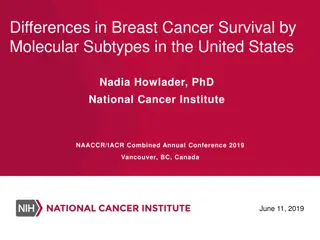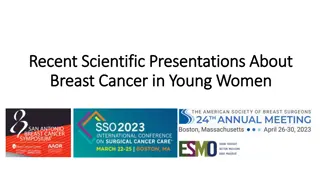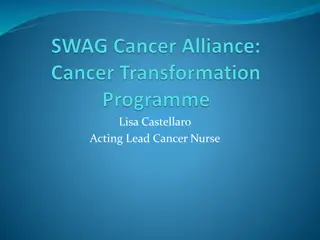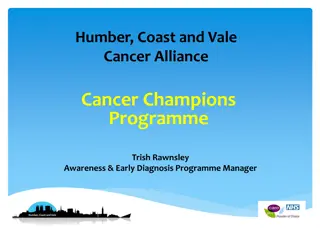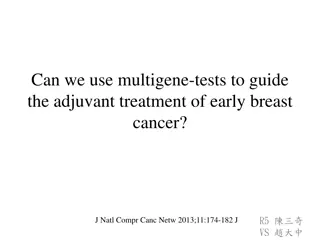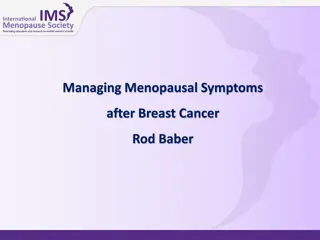
Breast Surgery Clinical Gateway Review in SWAG Region
Explore the Breast Surgery Clinical Gateway Review in Somerset, Wiltshire, Avon & Gloucestershire (SWAG) region, showcasing areas of excellence, key metrics, performance data, and current challenges and opportunities. Discover the high-functioning MDTs, patient care initiatives, workforce training programs, and more in this comprehensive review.
Download Presentation

Please find below an Image/Link to download the presentation.
The content on the website is provided AS IS for your information and personal use only. It may not be sold, licensed, or shared on other websites without obtaining consent from the author. If you encounter any issues during the download, it is possible that the publisher has removed the file from their server.
You are allowed to download the files provided on this website for personal or commercial use, subject to the condition that they are used lawfully. All files are the property of their respective owners.
The content on the website is provided AS IS for your information and personal use only. It may not be sold, licensed, or shared on other websites without obtaining consent from the author.
E N D
Presentation Transcript
Breast Surgery Clinical Gateway Review Somerset Wiltshire, Avon & Gloucestershire (SWAG) North Bristol NHS Trust Gloucestershire Hospitals Foundation Trust Somerset Foundation Trust Royal United Hospitals Bath NHS Foundation Trust Salisbury District Hospital Foundation Trust
Areas of excellence to share High functioning MDTs with broad adoption of MDT streamlining and participation in National MDT streamlining pilot Consistent reduction in breast reconstruction rates each Quarter Clinical trials nurse representation at MDTs, excellent trials support and recruitment, commitment to associate PI scheme Day case rates above 75% with GHFT and NBT with very high rates SWAG 2024/5 to date 87.4% FDS, 96.3% 31-day, performing above both targets Multidisciplinary workforce Triple assessment at all SWAG providers for all USC referrals Dedicated secondary breast care nurse specialist provision Multi-site Pilot of Breast MDT: Functional algorithm Mainstream genetic testing with R208 CNS network, receiving genomic education and training from SW GMSA Dedicated Breast Units Increasing inclusion of Breast pain pathways in ABS ASPIRE trial Patient experience Workforce and primary care training programmes Provider specific: GHFT; LICAP Flap access, community-based imaging, SDHFT: improved LOS and enhanced links to therapy team, BRA events and secondary cancer support group SFT: County wide vacuum biopsy service, Breast 111 service, YDH Breast pain service and modular day case 2 | facility NBT: Local flap service, academic surgeon attached to the University of Bristol
SWAG Breast FDS Performance SWAG Breast 31d Performance April- December 2024 SWAG Breast 62d Performance 3 |
Key metrics reviewed in 2024 Percentage of patients with reoperation (re- excision or mastectomy) on same breast within 1 year following breast excision for cancer (12mths to qtr end) Q2 2023/24 Percentage of mastectomies that are immediate reconstruction after reallocating mastectomy to referring provider (12mths to qtr end) Q2 2024/25 25.00% 30.00% 25.00% 20.00% 20.00% 15.00% 15.00% 10.00% 10.00% 5.00% 5.00% 0.00% 0.00% Royal United Hospitals Bath NHS Foundation Trust North Bristol NHS Trust Somerset NHS Foundation Trust Gloucestershire Hospitals NHS Foundation Trust Salisbury NHS Foundation Trust BADS Breast: Day case and outpatient % of total procedures (inpatient, day case and outpatient) (3mths to period end) 120.00% 100.00% 80.00% 60.00% 40.00% 20.00% 0.00% 4 |
Current challenges and opportunities Challenges Increased rates of benign disease and referral rates combined with reduced rates of physical examination prior to referral National Radiologist / radiographer workforce Equipment and Estates constraints Workforce sickness Wait times for Reconstruction, DIEP flaps worsened Older operating theatres without laminar flow Pathology resource constraints Increasingly complex patient presentations Reliance on insourcing for sufficient activity Oncology: Clinical capacity constraints, pre-assessment capacity and Increasing length and complexity of oncology treatments Opportunities Newer estates Upgrades to PACS and USS equipment Screening mobile unit renewal Digital pathology maturity and reporting uptake increase opportunity Breast pain pathways Southmead new Bristol Elective Care Centre backfill reduce limitations on breast reconstruction in main theatres Non-medical workforce roles Workforce succession pipeline planning 5 |
Future vision for breast services across SWAG CA Equipment and estates upgrades to Breast pain pathways implemented, evaluated and adapted to meet ABS guidelines (tbc) Risk stratified demand appropriate resourcing to reduce reliance on insourcing and outsourcing Fully optimise non-medical workforce Achieve the 62-day breast cancer wait times target Optimise already excellent day case rates, streamlined MDTs, genomics and trials activities Review and implement, where supported by robust impact evidence, new technologies such as Ai supported by Health Innovation Network Improved access to breast reconstruction with Bristol Elective Centre opening in 2025 Improve equitable access to complex oncological treatments 6 |
Anything else you wish to highlight for GIRFT Cancer Patient experience survey Information / communication to and about patient was above 80% for all associated KLOEs with main point of contact and ease of contact also above 80% Enough privacy was always given to the patient when receiving diagnostic test results 96% Care team patient centred planning KLOE s above 90% Information about treatments and response to ..(Surgery, chemotherapy and Radiotherapy) >79% Opportunity to improve information regarding hormones and immunotherapy Opportunity to improve experience post treatment Operational 2024 Performance and activity levels require additional to baseline BAU triple assessment and surgical activity Opportunity to realise theatre productivity improvement if remove theatre staffing gaps Importance of maintaining staff wellbeing to prevent burnout Develop advanced practice roles Reducing HER2 delays could prevent interim planning and multiple MDTs 7 |

